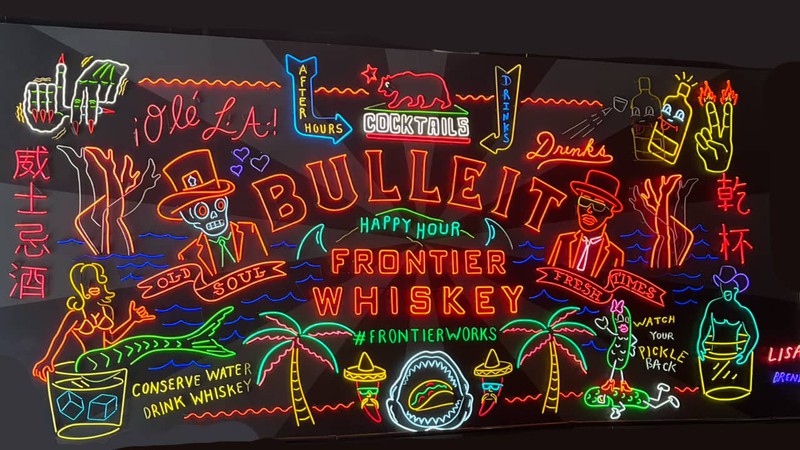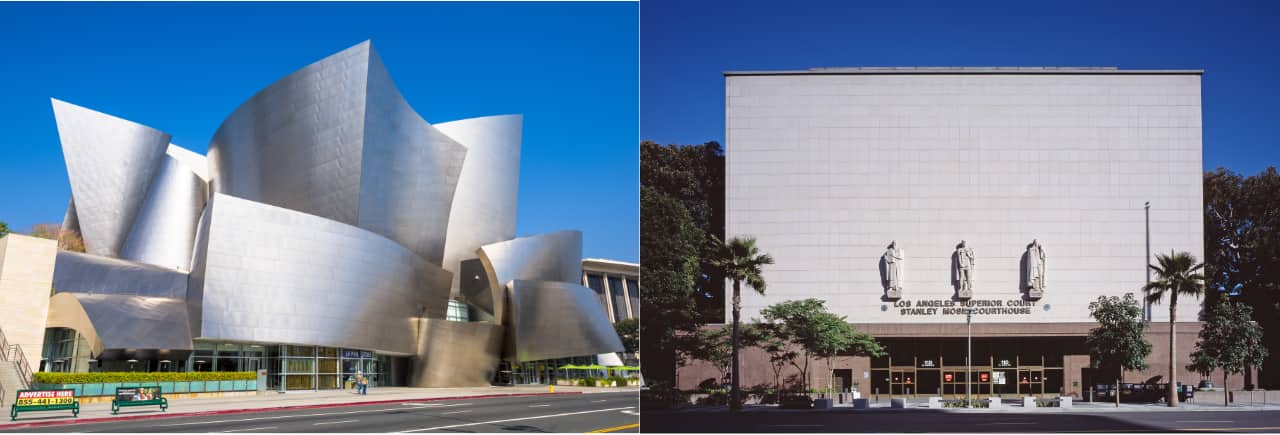In Downtown Los Angeles, a vibrant and diverse scene is being build on top of a historically awesome neighborhood.

A large neon art installation gracing one of the entrances to the Grand Central Market in DTLA. Chris Neklason contributed
When I was a kid in the '60’s and 70’s growing up in LA County, the air was yellow with car exhaust hanging heavy under the inversion dome covering the valley. On special “smog alert” days we kids had to stay indoors. Air quality was further compromised by my parents chain-smoking in the front seat of the big white Caddy we used to traverse the great highways that split the Greater LA landscape as surely as rivers or canyons, while my brothers and I sat in the back gasping for air, imagining our fingernails carving grooves in the back windows as we tried to claw our way out.
Good times.
After several years there, the gods smiled on our family and we moved up to northern California. It was literally, a breath of fresh air.
I recently returned to Los Angeles, the city, for the first time in several decades to attend the college graduation of our youngest daughter. My wife, who had visited on business a few years earlier, insisted on booking rooms in a hotel in downtown LA, in what she enthusiastically claimed was a walkable, vibrant urban core. So off we flew.
The freeway ride between LAX and our hotel was lined with billboards advertising traffic accident and workplace bullying lawyers (Call 833-FU-BULLY Today!) giving a weird vibe at the start of our trip. Clearly LA was a dangerous ride and a tough place to work. But could it be fun?
Downtown LA, or DTLA as it is being branded, is composed of several districts in the core of the city, appearing on a map as a rough triangle bordered on the east by the Los Angeles River, the south by the Santa Monica Freeway and the west by the Harbor Freeway.
There are several neighborhoods in DTLA including the Financial District, where our hotel was located, and the Arts, Jewelry, Fashion, Produce and Seafood districts, named for the neighborhoods where different goods were historically produced or processed. Little Tokyo and Chinatown are both part of DTLA, as is the old Civic Center, where city, county and federal government offices are concentrated. Bunker Hill, located between the Financial District and the Civic Center, has been developed into an upscale entertainment zone, and is home to the Frank Gehry-designed Walt Disney Concert Hall, the Broad Art Museum, the Museum of Contemporary Art, and several restaurants.
In May 2023, the Los Angeles City Council approved the DTLA Community Plan, which calls for growth—125,000 new residents, 70,000 new housing units and 55,000 new jobs by 2040.
DTLA is a patchwork of old buildings featuring beautiful stonework festooned with artistic flourishes intermixed with gleaming office highrises and newly built apartments. Our hotel, the fabulous Biltmore, first opened in 1923, and the Spring Arcade, where we had our first breakfast, in 1924.
In walking through some of the different districts, I saw infill housing in the form of new apartment buildings surrounded by old warehouses and boarded up storefronts, and old industrial buildings converted to lofts. In daylight hours the folks on the street are a rainbow of young and old, squares and hipsters, rich people, working stiffs and the down and out. Young people on scooters and ebikes zip along fearlessly with the cars. My wife and I were impressed with the energy and vitality of the people and the general scene.
The lack of chain food and coffee outlets was especially notable in the older neighborhood, though the area has plenty of restaurants, hole-in-the-wall bodegas and liquor-cigarette-and-lottery ticket stores. It also has restaurant clusters such as those on the ground floor of the lovely Spring Arcade building—a bustling food market hosting a couple dozen vendors, where we returned every day for breakfast and lunch, located in the Grand Central Market (opened in 1917) at the base of Bunker Hill.
Though our visit was short, it was fun, and instructive. DTLA is One Good Thing, and it will be interesting to see how it develops as the goals of the DTLA Community Plan are implemented.

In which we share one good thing about a community, county, or the state of California.
Do you have a good thing to share about your community?
Post it in the One Good Thing member discussion group.